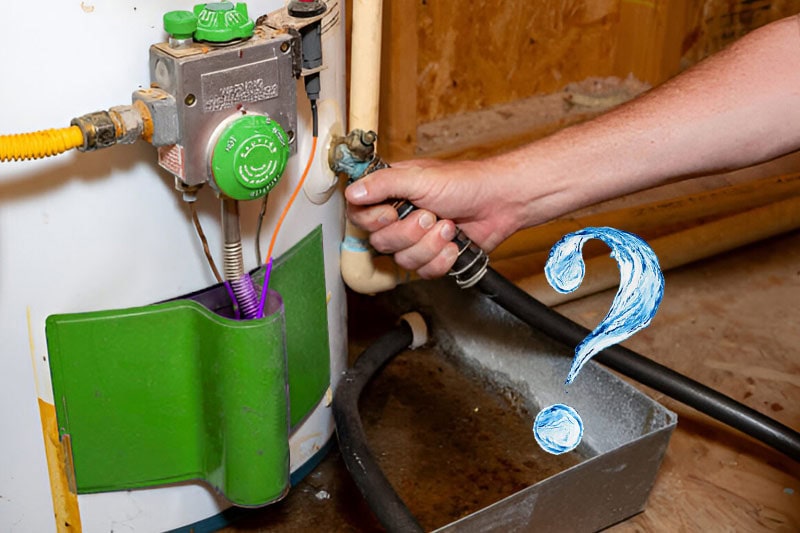Maintaining your hot water heater is really required which helps to upgrade heater longevity and efficiency. Over time, sediment and minerals start deposits at the bottom of the tank, which can affect water quality or it even lead to costly repairs. To avoid the costly water heater repair, drain the hot water from the heater to make sure that your appliance works smoothly and efficiently. Whether you are preparing to perform regular maintenance or need to troubleshoot a water heater issue, it’s important to know how to properly drain a hot water heater.
Why should you drain a hot water heater?
Draining your water heater is a straightforward, but still super important maintenance task that helps keep it running smoothly and efficiently. Gradually, accumulation and minerals from hard water can settle at the bottom of the tank, which can affect the performance of the water heater. By draining the hot water heater, you can clear away this buildup and make sure everything operates as it should be. This helps stay away from multiple problems like uneven heating, annoying or unwanted noises, and spike in energy bills.
Apart from this, regular water heater maintenance is especially key for homes who are struggling with hard water, where sediment can pile up more easily. Flushing out water from the heater can keep your water heater healthy and reliable for years to come.
What is the process to drain a hot water heater?

Draining your water heater is a key home maintenance task to maintain its efficiency and lifespan. Here are the steps to flush your hot water heater:
Switch off the water heater
Whether you are working with electric or gas water heaters to drain the water heater, the first thing you must do is turn off the power or gas supply. Safety first, right? This step is super important to keep everything accident-free while you tackle your heater.
If you have an electric water heater, simply switch off the power at the circuit. Don’t forget to double-check that it won’t turn back on while you’re working! For those with gas water heaters, be sure to turn off the gas supply to stop any gas from flowing to the heater while you get the job done.
Collect necessary equipment
If you’re looking to give your water heater a good flush, selecting the right tools is important. Start with a standard garden hose, it will help the drain old water efficiently and avoid any messy spills. A bucket or a floor drain is essential too because it keeps your space neat and tidy.
Don’t forget to have some towels or rags handy for those inevitable little drips or spills that might happen along the way. A screwdriver must be handy to open the drain valve as it depend on your water heater model
Attach the garden hose
To start, attach your garden hose to the water heater drain outside and make sure you won’t face any leaks. Then, stretch the other end of the hose toward a floor drain or place it in a large bucket to catch the water as it flows out.
Open the drain valve to start flushing
After attaching the hose securely, gradually open the drain valve. This will start the flow of water from the heater. Let the water run until it runs clear. This means the sediment and mineral deposits have been successfully washed away.
Shut the drain valve & detach the hose
Once the water runs clear, it’s time to close the drain valve. Just give the valve a gentle turn clockwise to make sure it’s close tight. Then, carefully disconnect the garden hose from the valve, and double-check to make sure there are no leaks.
Refill water heater with clean water
To get started refilling your water heater, make sure the drain valve is closed and the hose is disconnected. Now, just turn on the water supply and let the tank fill up. This might take a few minutes. Once the tank is full, don’t forget to turn the power or gas supply back on.
Things to keep in mind while drain water heater

Here are some important things to keep in mind while draining a water heater and just make sure the procedure goes smoothly:
- Safety first: Always make sure the water heater is powered off, whether it’s a gas or electricity water heater before beginning the draining process.
- Time to cool down : Give the water heater appropriate time to cool down before starting the draining process, especially if it has been running recently.
- Use the right tools: Gather all necessary tools such as a garden hose, bucket or drain, screwdriver and safety gear gloves and goggles for a safe and smooth process.
- Watch for sediment buildup: Drain the water heater regularly to remove sediment and mineral deposits that accumulate at the bottom, which can affect performance of hot water heaters.
- Check for leaks: After closing the drain valve, inspect for any leaks to avoid future issues.
- Refill water & restart: Once the draining is complete, refill the water heater and restart your water heater.
If you’re still unsure about this process, consider reaching out to a Parzival Plumbing technician for professional assistance with flushing your hot water heater.
Conclusion
Draining a water heater is a simple yet vital maintenance task. You can follow the above steps to maintain your water heater’s efficiency and longevity. For regular draining and maintenance of your water heater, you can contact Parzival Plumbing experts in Costa Mesa, Huntington Beach, Newport Beach, Newport Coast, Irvine, Lake Forest, Mission Viejo, Laguna Hills, and other surrounding areas. We help improve performance and prevent potential problems and costly repairs.
Need assistance to drain your hot water heater? Contact our Parzival Plumbing experts in Costa Mesa Now.

